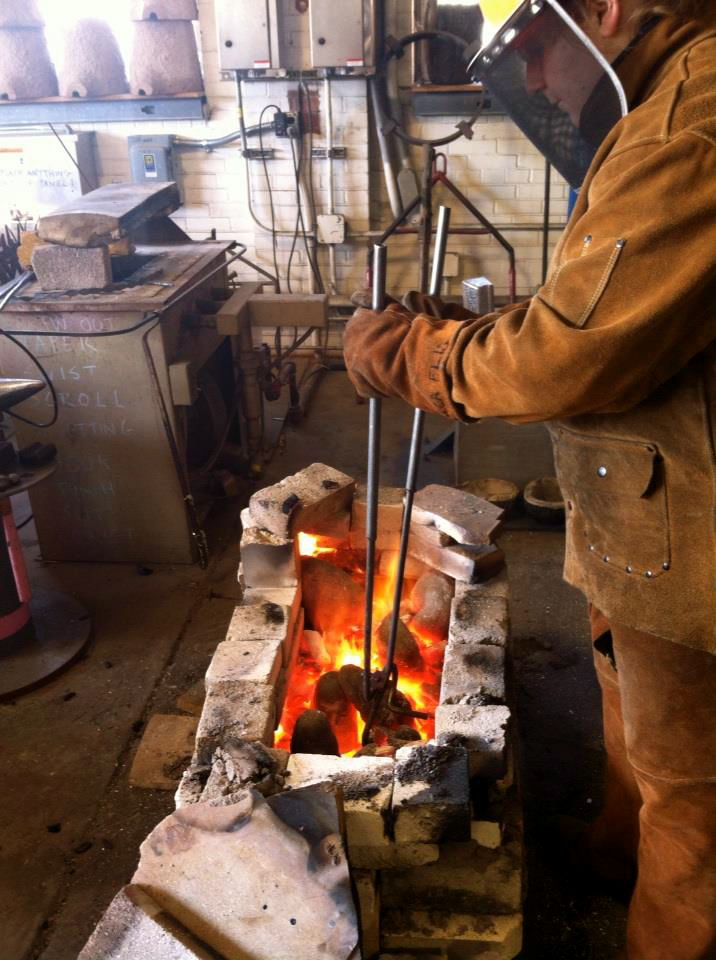Demo – Dung-molding
Ancient Dung-Molding Process
Rebecca Flis, Advanced Sculpture Student, Alfred University, USA
The purpose of this demonstration is to present an alternative, affordable, environmental process of mold making that can be done in your backyard. Unless you are an established artist, the equipment and materials necessary for casting are expensive, toxic and essentially inaccessible. But before resin-bonded sand, ceramic shell and investment, the dung and clay molding process was developed and practiced by ancient cultures to create cast metal items. Through researching, experimenting and re-creating this method, the emerging artist can continue producing cast metal work in an affordable and environmental way. This demonstration will introduce a process based on the ancient African dung method and show participants the basic clay and dung mold process.
Demonstrating the ancient dung process exemplifies the themes of the 7th ICCCIA, Iron Forming Landscape in that this method is a literal translation of the earth into cast iron. Unlike most modern processes, the dung method utilizes reuse and natural elements to reduce the impact modern casting has on the environment. Since this particular ICCCIA is focused on the sharing of knowledge and information, demonstrating the potential of the dung method would be an excellent addition to the variety of mold making techniques represented at the conference. The dung method is also an example of how schools that may not have the most advanced foundry tools can still participate in casting metal. This method is simple, inexpensive and effective. Presenting this process as a viable option for metal casters is a way to make connections and bring people and institutions together to discuss and confer with one another about this topic. The ICCCIA is meant to cultivate these types of connections. It’s an occasion for educators, students and independent artists alike to come together and share this type of valuable information, and make connections that will furthere
